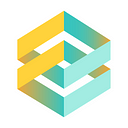1. IoT describes the digitization of things
2. IoT Data is information and measurements produced by IoT Devices (Smart Objects) that can be traded in IoT marketplaces
3. EoT describes the monetizations of things, where IoT Devices are able to share their Digital Assets autonomously via IoT marketplaces leading to a new Economy (Economy of Things)
1. The Internet of Things (IoT)?
18 years have passed since Kevin Ashton coined the term, ‘The Internet of Things’. Speed on to 2017 to a time where IoT is giving rise to a new phenomenon called the Economy of Things. Since IoT gives way to EoT, one must first understand IoT.
In a nutshell, IoT refers to all Smart Devices connected through the internet. These Smart Devices will include all mundane objects like consumer goods as well as industrial products and manufacturing processes. This means that IoT’s affects range from objects like coffee makers to crop harvesting equipment to cars according to elavon.
“ There’s a fairly basic formula here: contextually aware devices streaming rich data via ubiquitous connectivity = The Internet of Things.”
— elavon
Gartner predicts that by 2020, 20.8 billion IoT devices will be connected. These devices will produce IoT data with a value of up to $7.1 trillion.
The Internet of Things will be seamlessly integrated into our lives, however, how IoT data is commercialised has not yet be fully determined. Questions regarding IoT data security and monetisation are of peak interest, as consumers and businesses alike realise the value of IoT data.
But what exactly is your IoT data and how does it fit into the Economy of Things?
2. IoT Data and Artificial Intelligence (AI)
IoT data is produced by all kinds of Smart Devices, e.g. Roomba vacuum robot recreating floor plans from its movement while vacuuming.
You can imagine that by 2020 Smart Devices and machines will be using Artificial Intelligence (AI) to ‘learn’ user preferences. Ultimately making the life for the user easier and more efficient. These user preferences, made up of IoT data, will form valuable Digital Assets that can be monetised.
3. The Economy of Things (EoT)?
If IoT is “digitizing the physical world,” then the Economy of Things represents the “ liquefaction of the physical world.”
— IBM
The Economy of Things is created when new value is extracted from the Internet of Things. This means that physical assets are turning into Digital Assets that are able to participate in new disruptive digital markets, liquefying the physical world. The ‘ liquefaction’ of the physical world refers to assets around us to become “indexed, searched and traded as any online commodity”.
This does not only refer to a Smart Home where the lights come on when you open the door or a Thermostat that uses AI to ‘learn’ your temperature preferences, but this also refers to a world where a web of connected IoT Devices are in communication with each other, searching for what they need and trading autonomously in new digital marketplaces forming the Economy of Things.
To read more on IoT visit our last blog post or contact us with your questions through our website.
